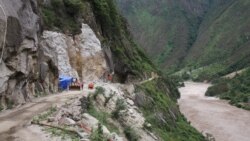Last “Natural” River and Challenges to Protect It
We just came back in this March. The river is still so beautiful,” says Wang Yongzhen, talking to Tibet in Review from Beijing about Gyalmo Ngulchu, the river that is called in Chinese Nu River (Angry River.) But she is worried that that beauty might not last for too long after she saw the dam construction on the “last natural river,” has already begun. In 2004 then China’s prime minister Wen Jiabao postponed a large number of planed dam projects that included 13 dams in Gyalmo Ngulchu. But Ms. Wang and her team of journalists and environmentalist witnessed the base work of construction for a dam project in Yunnan Province is already carried out shortly before Wen Jiabao’s retirement. In January, China’s State Council announced there will be five dams constructed on the Gyalmo Ngyulchu, one in Tibetan Autonomous Region and four in Yunnan Province. Ms. Wang argues China should leave one “natural river” for the next generation. But for Katy Yan of the International Rivers, the issue of leaving the river alone is not just for the China’s next generations’ welfare, but the lives of people in the downstream rivers today. “The value of keeping the river largely free flowing has concrete implications for the downstream communities in Burma and Thailand,” Katy Yan says. “They need this free flowing to support their livelihoods.” Wang Yongzhen, a former senior reporter of China’s National Radio, started Green Earth Volunteers, an NGO based in Chinese capital that advocates to project the “angry river.”





